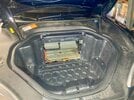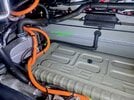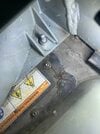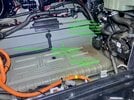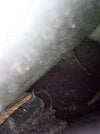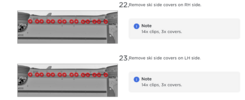removing ski rails probably requires the battery pack to be dropped as the rail bolts are tricky to access when it's up inside (and for some reason the factory loved putting on an extra helping, or two, of Loctite on these bolts) - or maybe it's because we always have the packs out when we take the rails off

Either way, not an insurmountable task, but with the service guide in hand, strict adherence to the safety measures and a solid rack to support the pack when you drop it, certainly doable.
with regards to your pack, really no need to open it up and snoop around. not sure what a visual inspection would really show you - the odds of visually locating the source of the delta are definitely not in your favor

. if you send us a 5-10 min dump of the PT CAN data we should be able to give you a good sense of where things are at. (yes, with all this cloud software on hand you'd think we'd be able to provide a web based diagnostic tool for owners, right? <reprioritizes feature backlog>).
in the meantime, here's a quick rule of thumb: 5mV is equivalent to roughly at least 1Ah (it can be as little as 3-4 mV per Ah depending if you're nearer the middle of the SoC curve, but for purposes here, assume 5mV per Ah). That means that one brick is probably at least 4 Ah out of balance, give or take. Now, 4 Ah is probably still borderline for a BMS_u029 alert - we've seen capacity deltas on a single module as high as 15 Ah for the BMS_u029 / BMS_u018 Quinella. And of course, some packs can be out of balance more than 20 mV and chug along just fine.
but a quick glance at your distribution shows one brick well outside the distribution. (could you repost the graph for the broader audience to follow along?) which suggests a cell failure (or likely a pending failure in that brick). vs say a broader degradation across all the bricks with a higher standard deviation across the pack, but no one brick showing pathological behavior. and for what it's worth, we've seen as little 4-5 Ah deltas trigger a BMS_u029. As we've posted elsewhere - it's not the Ah delta itself that triggers the BMS_u029, but rather how it got there - for example, did it drop 4-5 Ah over a short period of time? is there noticeable self-discharge during rest? etc.
OK, fine, great, so what to do?
Don't do anything! Keep driving! #getoutanddrive
And don't worry, because your BMS is basically like Gordon Ramsey - it will be sure to tell you loud and clear when it's time to shutdown the kitchen.

In the meantime, keep enjoying your Model S!



